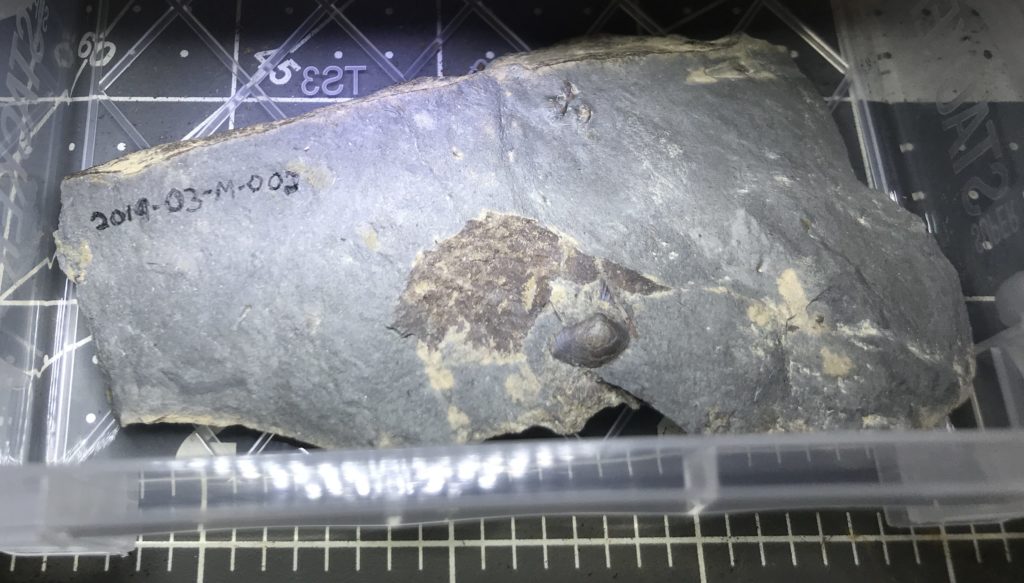NOTE: I have moved to a different system for tracking, similar to the Carnegie Museum style. It is a simple CM 12345 mark. While it was nice to include the locality, year, month in the specimen, I now keep that information separate in an online database for referencing.
Clint
I need to keep the order of a growing collection of specimens, so I have developed the following identification system to be used on what I call Collection Pieces. These are recorded in our fossil catalog.
Therefore, an example Identification System code:
CG-0001
Codes shall be deconstructed as follows:
COLLECTIONID-SEQUENCE
Marking Specimens
Consequently, identification numbers need to be added directly to specimens if possible. I researched different methods and found that archival ink pens seemed the best in class. While white paint works well on dark specimens, I have not used any for marking. I tend not to want to mark the detailed surfaces of specimens with marking materials. If I mark a specimen, I try to mark it off to the side or underside. For limestone, I will use a grinder and grind a flat surface somewhere that does not have fossil detail. I then use a Micron PN archival ink pen to mark directly on the limestone.
Applying a layer of Paraloid B-72 to the surface and marking on top of that is a standard method. You can then later use a solvent to obliterate the mark if desired. You are supposed to apply another layer of B-72 on top of that to protect the mark, but I find the solvent often lifts or muddies the mark. Since the direct method of marking the limestone has proven effective, B-72 has been more used for repairing broken specimens.
Legacy Locality Codes
These legacy codes were used in early 2019 when I started to build the catalog. I have since discontinued usage of these, and they are no longer part of the catalog.
| L | Limestone |
| AL | Ames Limestone |
| M | Mid Level Shale |
| US | Upper Shale |
| K | Pieces from an Eastern Gilpin Township Locality |
| G | Fragments from a Western Gilpin Township Locality |
| U | Unknown Origin |
Early Catalog of Pieces
I added some of the early pieces using legacy collection codes.
- 2019-02-US-001 – Orthotetes
- 2019-03-M-001 – Meekospira Peracuta
- 2019-03-M-002 – Paleoneilo & Lepidophylloides
- 2019-03-L-003 – Metacoceras
- 2019-04-L-001 – Metacoceras
- 2019-04-L-002 – Mooreoceras
- 2019-05-K–001 – Lepidodendron
Identification System Collection Pieces as a Category
You can find posts from the entire category listing here.
Examples of Identification Systems Elsewhere
I researched identification marking and numbering systems before I developed my own. I wanted to ensure I was not missing anything before setting a standard. Here are some interesting examples in use.
- The Spurlock Museum of World Cultures at Illinois – Numbering Systems Policy
- The National Park Service – Marking
- The Getty – Cataloging Museum and Special Collections Works
- Assembling an Archival Marking Kit for Paleontological Specimens

